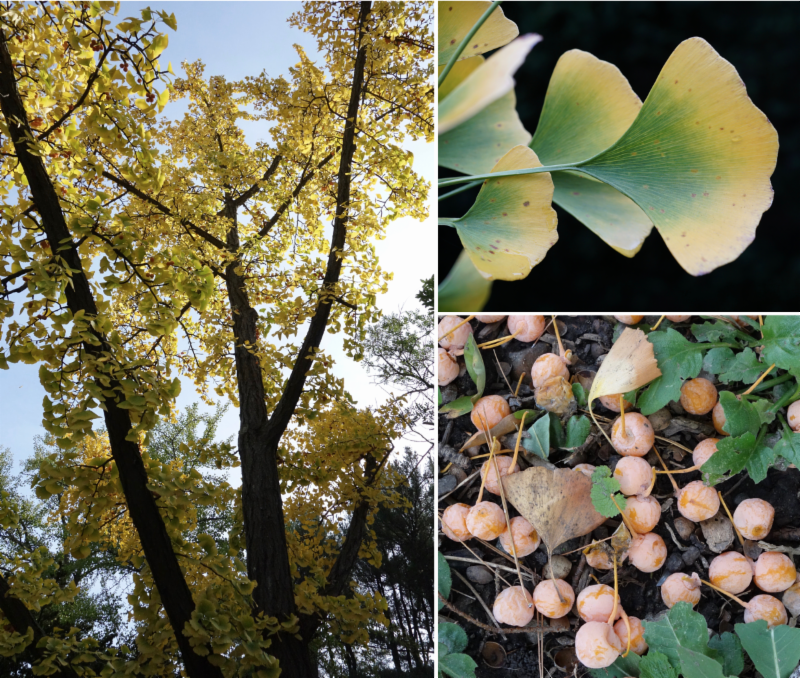When I look at these pictures, I can practically smell them! And my hope is that you will take my advice and go smell for yourself. Because, no one can be said to truly know the ginkgo without experiencing the aroma of the seeds right about now.
Ginkgo biloba is dioecious, with separate seed-bearing trees and pollen-producing trees. Sadly, all ginkgo trees sold in the horticultural trade are pollen-producing trees (created by cloning other pollen-producing trees). This means we are missing out on the experience of meeting up with seed-bearing ginkgo trees. But not so at the Arnold Arboretum, where most of our ginkgo trees were grown from seed. Such trees turn out to be 50-50 male (pollen-producing) and female (seed-producing).
So what makes a ginkgo seed so pungent? The answer is lots of butyric acid in the yellow fleshy seed coat. This is the same chemical that dominates the smell of human vomit and rancid butter. And while we may find this unappealing (understatement), clearly, long ago, there were animals that viewed the fleshy coat of a ginkgo seed as haute cuisine. As with most fleshy seeds and fruits, the embryo (future seedling) is housed within a very hard shell that protects it as it passes through the gut of the animal that has eaten it. A good deal for all, as the seed gets safely dispersed from its mother while passing through the gut—and the animal gets food as it digests the fleshy outer coating.

For a most intense ginkgo seed experience, head over to the Walter Street Gate (as I did yesterday) to a 1904 accession (232-93*A; left image) grown from a seed from Korea, and hang around for a few minutes to take in the magnificent gold of fall leaves (upper right), and the overpowering stench of fall seeds (lower right).
